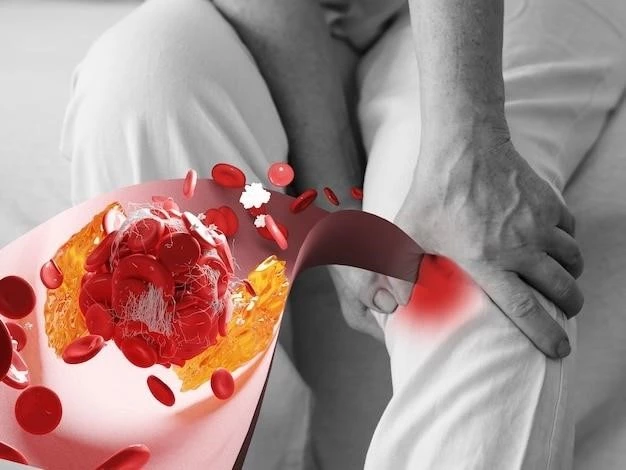Acute Myeloblastic Leukemia Type 7 is an aggressive form of leukemia characterized by rapid proliferation of immature myeloblasts in the bone marrow.
Description and Characteristics
Acute Myeloblastic Leukemia Type 7, also known as M7 AML, is characterized by the presence of abnormal megakaryoblasts in the bone marrow. This subtype is more commonly seen in children and is associated with a poor prognosis. Patients may present with symptoms such as anemia, fatigue, and increased risk of bleeding due to low platelet counts. Genetic mutations, such as the t(1;22)(p13;q13) translocation, are often observed in M7 AML cases.
Treatment Options for Acute Myeloblastic Leukemia Type 7
Chemotherapy
Chemotherapy is a primary treatment for Acute Myeloblastic Leukemia Type 7, involving the use of anti-cancer drugs to kill leukemia cells. The regimen may include cytarabine and anthracyclines. Chemotherapy aims to induce remission and reduce the number of leukemia cells in the bone marrow. It is often administered in cycles to target cancer cells at different stages of growth.
Stem Cell Transplantation
Stem cell transplantation, also known as a bone marrow transplant, is a procedure where healthy stem cells are infused into the patient to replace damaged or diseased bone marrow. In Acute Myeloblastic Leukemia Type 7, this treatment option may be considered for patients with high-risk disease or those who have achieved remission but are at high risk of relapse. Stem cell transplantation can help restore normal blood cell production and immune function.
Targeted Therapy
Targeted therapy for Acute Myeloblastic Leukemia Type 7 involves using drugs or other substances to specifically target and attack cancer cells while causing less harm to normal cells. This treatment option may include medications that target specific genetic mutations or abnormalities present in M7 AML cells. Targeted therapy is tailored to each patient’s unique molecular profile and aims to improve treatment outcomes while minimizing side effects.
Symptoms and Diagnosis of Acute Myeloblastic Leukemia Type 7
Common Symptoms
Common symptoms of Acute Myeloblastic Leukemia Type 7 may include fatigue٫ weakness٫ shortness of breath٫ easy bruising٫ bleeding٫ frequent infections٫ fever٫ and weight loss. Patients may also experience bone pain٫ swollen lymph nodes٫ and an enlarged spleen. It is crucial to promptly consult a healthcare professional if experiencing persistent or concerning symptoms for timely diagnosis and management of the condition.
Diagnostic Procedures
Diagnosis of Acute Myeloblastic Leukemia Type 7 typically involves blood tests to evaluate cell counts and morphology, bone marrow aspiration and biopsy to examine the bone marrow for abnormal cell presence, and genetic testing to identify specific mutations. Imaging studies like CT scans or ultrasounds may be used to assess organ enlargement. A precise diagnosis is crucial for determining the most appropriate treatment plan and prognosis for patients with M7 AML.
Prognosis for Patients with Acute Myeloblastic Leukemia Type 7
Factors Influencing Prognosis
Several factors can influence the prognosis of patients with Acute Myeloblastic Leukemia Type 7, including age at diagnosis, overall health status, response to treatment, specific genetic mutations, and the presence of other health conditions. The promptness of diagnosis and initiation of appropriate therapy also play a significant role in determining the outcome for individuals with M7 AML.
Survival Rates
The survival rates for patients with Acute Myeloblastic Leukemia Type 7 vary depending on several factors٫ including the stage at diagnosis٫ response to treatment٫ and individual characteristics of the disease. With advancements in treatment modalities such as chemotherapy٫ stem cell transplantation٫ and targeted therapy٫ the survival rates and outcomes for individuals with M7 AML have shown improvement in recent years.

Risk Factors Associated with Acute Myeloblastic Leukemia Type 7
Genetic Predisposition
Genetic predisposition is a significant risk factor for Acute Myeloblastic Leukemia Type 7, with specific chromosomal abnormalities such as the t(1;22)(p13;q13) translocation commonly associated with this subtype. Inherited genetic mutations and familial history of leukemia can also contribute to the development of M7 AML. Understanding the genetic factors underlying the disease is crucial for personalized treatment strategies and prognostic assessments.
Environmental Factors
Exposure to certain environmental factors such as ionizing radiation, benzene, chemotherapy agents, and tobacco smoke has been linked to an increased risk of Acute Myeloblastic Leukemia Type 7. Occupational exposure to chemicals or hazardous substances may also contribute to the development of M7 AML. Minimizing exposure to known carcinogens and adopting healthy lifestyle practices can help reduce the risk of developing this form of leukemia.
Lifestyle Changes for Managing Acute Myeloblastic Leukemia Type 7
Dietary Modifications
Dietary modifications play a crucial role in managing Acute Myeloblastic Leukemia Type 7. Patients are advised to follow a balanced diet rich in fruits, vegetables, whole grains, lean proteins, and healthy fats. Adequate hydration is essential to support overall health and well-being during treatment. Limiting processed foods, sugary beverages, and excessive salt intake can help optimize nutritional status and support the body’s immune system.
Exercise and Physical Activity
Regular exercise and physical activity are beneficial for individuals with Acute Myeloblastic Leukemia Type 7. Engaging in light to moderate activities such as walking, yoga, or swimming can help improve energy levels, reduce stress, and maintain muscle strength. It is essential to consult healthcare providers before starting any exercise routine to ensure safety and appropriateness based on individual health status and treatment plan.
Research Advances in Acute Myeloblastic Leukemia Type 7
New Treatment Approaches
Ongoing research in Acute Myeloblastic Leukemia Type 7 is focused on developing novel treatment approaches to target specific molecular pathways involved in M7 AML progression. These innovative therapies include immunotherapies, epigenetic modifiers, and combinations of targeted agents to improve treatment outcomes and reduce relapse rates. Clinical trials are integral for evaluating the safety and efficacy of these new treatment strategies in patients with Acute Myeloblastic Leukemia Type 7.
Genetic Studies
Genetic studies in Acute Myeloblastic Leukemia Type 7 aim to identify specific mutations and chromosomal abnormalities that drive the development and progression of M7 AML. By understanding the genetic landscape of the disease, researchers can tailor treatment options based on individual genetic profiles, leading to more personalized and effective therapies. Advances in genetic studies hold promise for improving outcomes and developing targeted treatments for patients with Acute Myeloblastic Leukemia Type 7.
Support Resources for Individuals with Acute Myeloblastic Leukemia Type 7
Patient Support Groups
Patient support groups provide valuable emotional support, information, and resources for individuals with Acute Myeloblastic Leukemia Type 7. These groups offer a platform for patients to connect with others facing similar challenges, share experiences, and receive encouragement throughout their treatment journey. Joining a support group can help patients cope better with their diagnosis, alleviate feelings of isolation, and access practical assistance when needed.
Counseling Services
Professional counseling services are essential for individuals with Acute Myeloblastic Leukemia Type 7 to address psychological and emotional challenges associated with the disease; Counseling can help patients and their families navigate the complexities of diagnosis, treatment decisions, and coping with the impact of leukemia on daily life. Mental health professionals provide valuable support, coping strategies, and guidance to enhance overall well-being and quality of life for those affected by M7 AML.
